Australia So Much to See


Darwin, Northern Territory
West of the Kakadu National Park boundary for some way it is Military land, with numerous warning signs. We drove into Leaning
Tree Lagoon Nature Reserve intending to stay overnight, but found no camping signs, so due to the recent changes we were unable to
stay. Part of the Marrakai Floodplains, in the wet season the lagoon drains into the Adelaide River via the Marrakai Creek.
When built in 1974, the Casuarina Shopping Centre was said to be the largest in the Southern Hemisphere. Now it only ranks as
the largest in the Northern Territory with around 200 shops.
There was so much more we could have seen and done in Darwin, but
three days in any city is more than enough for us, and we were keen to move on to other exciting places.
After failing to have a satisfactory telephone conversation with reception at our chosen caravan park due to reception drop outs,
we drove on into Darwin. We were lucky and were given a roomy site with suitable access in an otherwise fairly full caravan
park. This was to be our base for a few days while having maintenance done, sightseeing and shopping in Darwin. For a
park just off the Stuart Highway and in close proximity to the airport, it was surprisingly quiet. This centrally sited caravan
park has since closed.
There was a little water left in the centre of the lagoon, lots of snowflake lilies, and a greater variety of birds than we saw at
Mamukala Wetlands. Around Humpty Doo and onwards to the Stuart Highway, there were Mango Farms and a number of new residential
subdivisions. In 1954 rice growing was trialled in the area with the Fogg Dam being built for irrigation. Rice growing
failed, but mango farming has been very successful. Fogg Dam is now a Conservation Reserve and bird watching locality.
Our first stop was in central Darwin to tour the underground fuel storage facilities built during WWII. Japanese air raids of
19th February 1942, 16th March 1942 and 16th June 1942 destroyed seven of the eleven above-ground oil storage tanks that were located
on Stokes Hill Wharf. Commencing in 1943, five # tunnels were built at the great expense of 1.5 million pounds, but were
never used as the war ended shortly after they were built. Only two are open to the public, and the location of some still remains
a secret. The following website details that only five of the proposed eight # planned were built: OzAtWar Two
are underneath the present day Parliament House. The two near the wharf were opened to the public in 1992, fifty years after
the bombing of Darwin. A photographic display of war time photos is on display along the entire length of the 171 metre long
tunnel number 5. The rusted floor has been removed. Its capacity was 3.8475 million litres. Tunnel number 6 is 78
metres in length and has a capacity of 1,755 million litres. Both tunnels are 4.5 metres in width and five metres high.
See more about the construction from historian Doug Tilley.
Port Darwin was named by Lieutenant Stokes of the British Navy in September 1839 in honour of his friend Charles Darwin. Thirty
years later George Goyder arrived to establish a settlement in the north of Australia and the current site was selected. The port was used to supply the new settlement of Palmerston (now the city centre of Darwin).
A defence build up in Darwin commenced
as early as the 1920s with the construction of nine naval oil storage tanks carrying 63,400 tonne of oil being completed by 1941. At that time Australia had been at war in Europe and the Middle East for two years.
With an increased naval presence already
in place, and the establishment of coastal guns, Larrakeyah Barracks, the worldís longest boom net to prevent submarines from entering
the harbour, hospitals, anti-aircraft defences and RAAF squadrons, Darwin was assuming a role as a strategic base for the defence
forces.
With the entry of Japan into the war in December 1941, a general evacuation of woman, children, aged and infirm
began.
On 15th February 1942 a convoy of ships carrying troops to reinforce Timor left Darwin. They came under heavy
attack and returned the next day.
On 19th February 1942, Japanese headed towards Darwin with 81 medium bombers, 71 dive
bombers and 36 fighters. There were at least 45 vessels in the harbour at that time and 21 were sunk or disabled. Many
buildings, including those on the airfield and the Darwin Post Office were amongst those destroyed during the first air raid; the
Post Office was on the site where Parliament House now stands. Twice as many bombs were dropped on Darwin than were dropped
on Pearl Harbour ten weeks prior, in two waves that morning. At least 292 people were killed with hundreds more injured.
These unexpected raids shocked the nation, although the magnitude of the damage was censored.
By late 1942, there
were 60,000 troops based in the Northern Territory. Darwin sustained at least 62 more air raids to 12th November 1943, but none
so severe as on the first day.
From signage at Survivors Lookout
From these tunnels, a series of steps goes to Survivorís Lookout on the Esplanade, overlooking Stokes Hill Wharf and in close proximity
to Government House, Parliament House and a number of other historic buildings. Plaques and photographs tell the story of the
bombing of Darwin in 1942.
Underneath the wings of the B52 and all around are other planes and air force memorabilia and history outlines. All in all an
interesting and enlightening day learning about the war history of Australian forces.
The following day we went to the Aviation Heritage Centre near the airport, where a massive USA B52 bomber dominates the
display shed. In 1965, B52s commenced operation in Vietnam during the Vietnam War which ran between 1955 and 1975. Australia did
not send troops to join the US forces until 1962.
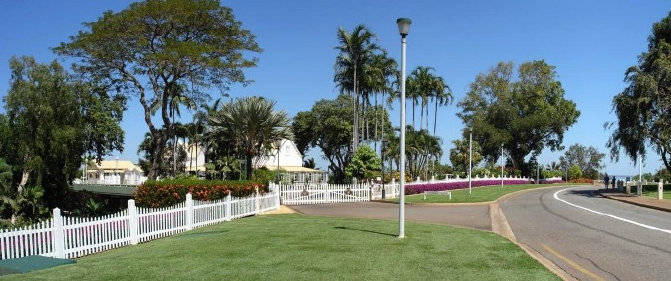
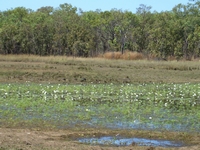
There was a large wetlands area as we approached the Adelaide River, with the Window on the Wetlands Centre on a small hill. We chose not to stop, as we needed to find a place for a few nights in Darwin and it was already well into the afternoon.
Jumping
Crocodile boat tours also start from this point. We chose not to patronise these tours. See why in Crocodiles here. Seeing
crocodiles hunting the wild at Cahillís Crossing was more appealing to us anyway.
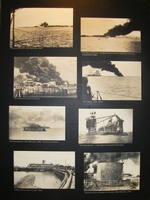
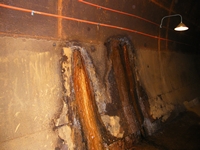
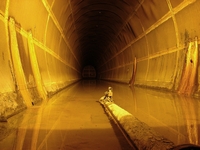
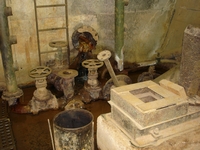
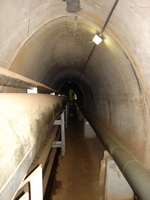
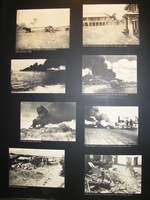
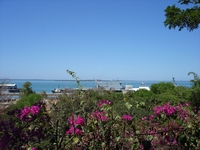
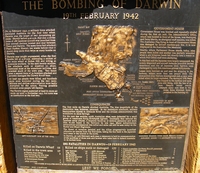
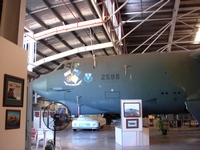
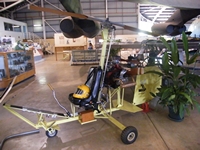
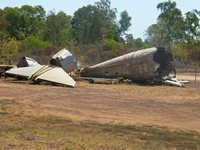
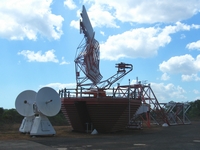
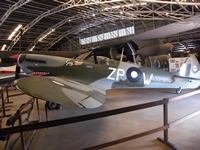
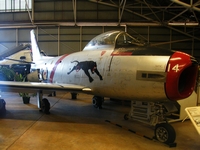
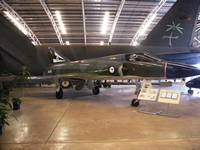
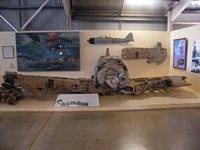
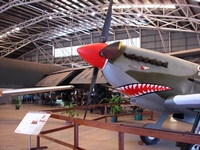
Stokes Hill oil tanks ablaze
Post Office hit 19/2/1942
Cleaning up Police barracks following 19/2/1942 raids
Lucky escape for pilot at Coomalie 9/1944
NEPTUNA ablaze, CAMILLA in foreground
A massive B52 bomber dominates the display
Bombs over Darwin painted by James Baines together with wreckage of a Japanese Mitsubishi shot down on Melvile Island during the first
air raid on Darwin
Grey Nurse - A spitfire Replica.
CAC Avon Sabre. This aircraft is a composite of two different model of Sabre
Dassault Mirage was a front line fighter from the early 1960s to 1989
Stokes Hill oil tanks ablaze
Wasp Air Buggy Grycopter home built from a kit and donated to the museum in 2003. Rotor blades are shorter for display purposes
Read about the World War II air raids on Australia from Wikipedia
The loss of life on this first day of air raids was dramatically understated in the media, with press releases listing some of the
property damage and saying that a few lives had been lost. Any claims made by the Japanese were censored from publication.
Although we are usually not keen to visit capital cities when caravanning, Darwin was one we really wanted to see. First we
had a few more sights to see along the road from Kakadu. We had planned to spend a night at a Lagoon along the way so we could
reach Darwin early in the day to have a better chance of finding a suitable place in a caravan park without a booking as it was peak
season. However the lagoon was now signed No Camping.
Copyright (C) 2013 AustraliaSoMuchtoSee.com. All rights reserved




















